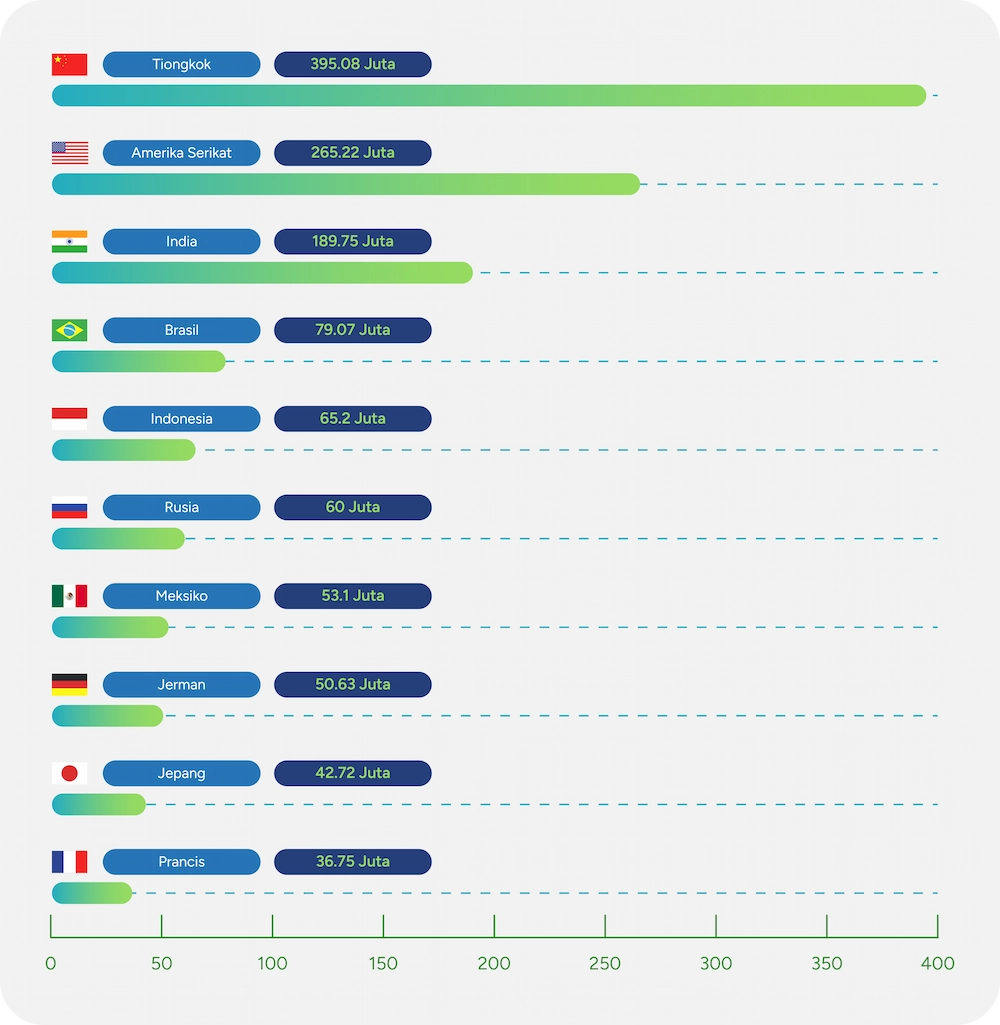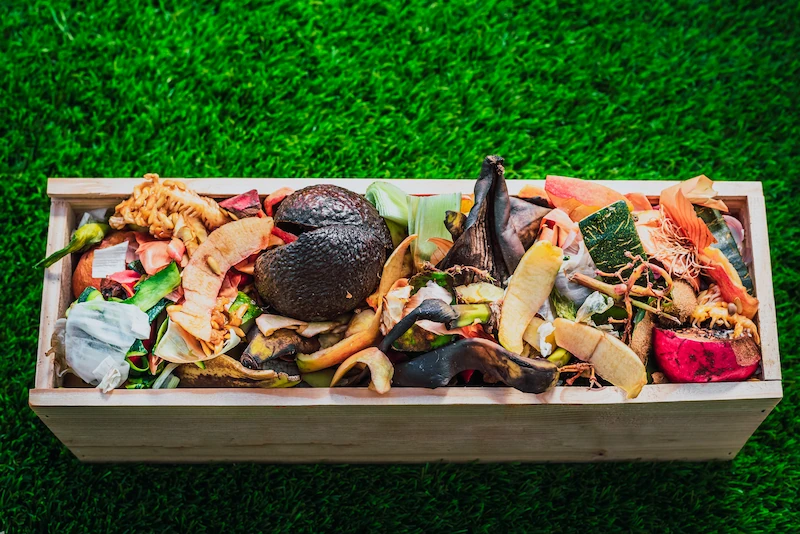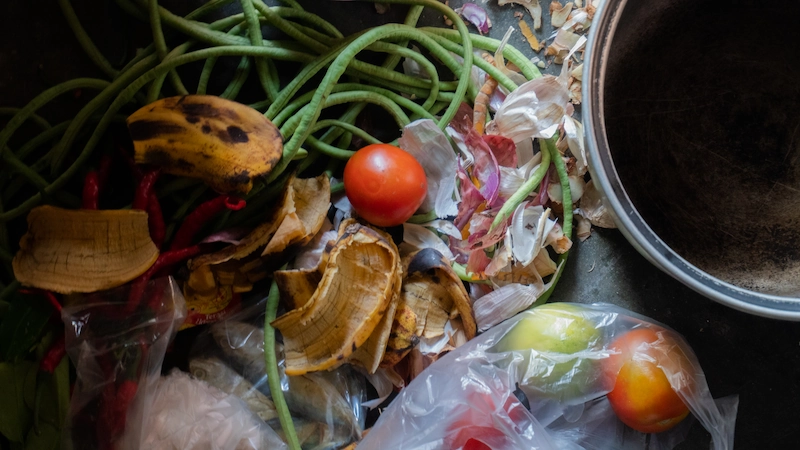Table of Contents
Upon hearing the word organic waste, you might think of familiar pieces of waste in everyday life that are hard to avoid. You can spot various organic waste examples in the surrounding environment.
Based on data from Databoks, Indonesia was the 5th largest waste producer in the world in 2020.

In 2020, Indonesia’s waste composition, based on the type of waste, was dominated by food waste. It contributed to 40.03% of the country’s total organic waste, according to SIPSN data.
With the proper management, organic waste can offer a lot of benefits. So, do you want to dig more into the examples of organic waste, its definition, types, and benefits? Let’s look at the explanation below!
What Is Organic Waste?
Before getting into the examples of organic waste, you must understand this entity first. Organic waste is waste that comes from the remains of living organisms, such as humans, plants, and animals.
Organic waste can easily decompose through natural processes without human intervention. It has biodegradable properties, which means it can be degraded by decaying bacteria (microbes).
Even though organic waste produces waste, you can utilize it for something useful with a specific process. This characteristic allows organic waste to be a part of a sustainable natural cycle that is environmentally friendly.
Types of Organic Waste
Organic waste is divided into two main types: dry organic waste and wet organic waste. Here’s the explanation of each:
Dry Organic Waste
Dry organic waste is waste that has a low water content. It comes from plant parts that no longer contain much water or moisture, which is usually difficult to recycle. Therefore, burning it is the preferred choice of organic waste disposal in this case.
Wet Organic Waste
Wet organic waste has a high percentage of water content, which makes it decompose faster than other types. However, it may cause unpleasant odors. Usually, wet organic waste consists of food scraps and other kitchen waste.
Read also: Beware! Don’t Underestimate This Waste in Your Home! – Indonesia Asri
Examples of Organic Waste
After learning about organic waste and its types, let’s further dive into some examples in the surrounding environment. Some examples of organic waste are as follows.

Dry Leaves
Dry leaves fall from aging or neglected trees. Usually, dry leaves pile up in certain seasons. Other examples of dry organic waste from trees are twigs, wood, reeds, coconut fiber, paper, and many more.
Animal Feces
Animal feces are generally widely used as manure to improve soil fertility due to their nutrients. Usually, wet organic waste used to make animal manure for fertilizer is goat and cow feces.
Food Waste
The next example of wet organic waste is food waste. It’s often known as household waste, which includes tea or coffee grounds, leftover rice, rotting side dishes, used flour, and so on.
Vegetable and Fruit Scraps
The next example of organic waste is vegetable and fruit scraps. Generally, this waste consists of peels, seeds, and rotten vegetables and fruits. As a wet organic waste, they’re usually thrown away.
Fish Bones
Fish bones are commonly leftovers from all-fish or seafood restaurants. Usually, people use fish bones to make food products, like fish bone meal.
Human Feces
Another example of organic waste is human waste. This waste can be used as an alternative plant fertilizer.
However, such practice is rarely heard of as it evokes a feeling of disgust. Even so, fertilizer made of human feces has a high economic value.
Read also: Various Liquid Waste That’s Surprisingly Beneficial – What Are They? – Indonesia Asri
Benefits of Organic Waste
Organic waste recycling proves to have many benefits for the environment. It plays a crucial role in minimizing the amount of waste in landfills. Apart from turning it into fertilizer, there are other benefits of organic waste, such as:
Biogas
Organic waste can be utilized as environmentally friendly energy biogas. Biogas is methane gas from the organic waste fermentation without oxygen (anaerobic).
Generally, the organic waste used to make biogas includes tempeh waste, tofu, and feces. Ultimately, biogas serves as cooking fuel or generates electricity, which helps minimize fossil fuel dependence.
Animal Feed
Organic waste can be recycled into animal feed. Some common organic waste examples of animal feed from organic waste are vegetable and fruit scraps. These leftovers contain nutrients that may help provide the livestock with necessary healthy feeding.
Handicrafts
With the proper organic waste management, you can turn the leftovers or scraps into high-value handicrafts. The craft serves to decorate the room or be reused for different purposes.
Several handicrafts made of organic waste are key chains from seashells, miniatures from fish bones, photo frames from corn husks, and many others.
Those are some examples of organic waste, along with an explanation of its types and benefits. Hopefully, it can help you understand how to run proper and appropriate organic waste management.
When realizing the importance of recycling, you become more aware of maintaining environmental cleanliness and sustainability. One of the steps in managing waste is by selecting and sorting it.
You can participate in the organic waste recycling movement by joining Operasi Semut by Indonesia Asri.
This activity aims to educate the public about the importance of sorting waste before disposal or transforming it into economic goods.
Are you interested? Register now and be part of Indonesia Asri to realize a greener Indonesia.
Read also: Is Throwing Waste in the Bin Enough to Solve the Trash Problem?










